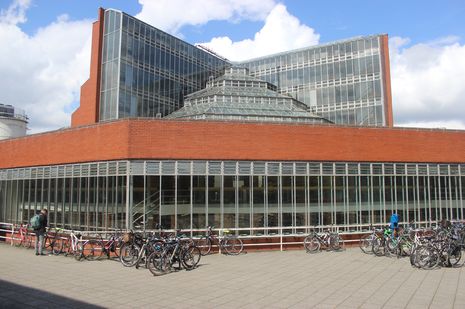Rethinking gender and representation in the new History Tripos
Emma Tenzler speaks to students and staff to assess whether the new History Tripos is living up to its promise of inclusion

The exclusion of women from the historical record is as old as history itself. As Simone de Beauvoir wrote in 1949, “the representation of the world […] is the work of men; they describe it from their own point of view, which they confuse with absolute truth.”
Decades of feminist activism have exposed the conflation of male history with universal history for what it was and is: a falsification of the past. As a result of attempts to widen the scope of history curricula, including gender studies programmes and more inclusive syllabi, the absence of women in historical narratives now prompts scrutiny. With the legacy of feminist reform in mind, how representative is the new Cambridge History Tripos?
In 2022 the History Tripos was reformed for the first time in 60 years. Alongside structural changes, one of the reform’s main objectives has been the widening of the breadth of topics studied at Cambridge.
For Dr Arthur Asseraf, the Director of Undergraduate Studies in History and Fellow at Pembroke College, these reforms have enabled the new History Tripos to redress the previous exclusion of women’s history. Dr Asseraf described how Part I of the old History Tripos required all students to study papers on British political, economic and European social history. Women were largely excluded from political history and confined to the social and economic papers. “As if the social condition of women were not itself a deeply political issue!” Dr Asseraf exclaims.
As a result of the 2022 reforms, male-centric papers on British and European history are no longer privileged. At least one paper relating to gender features in each year, and most courses dedicate at least one lecture to women, with the opportunity to pursue research projects into the lives of women in Cambridge in the 20th century or gender in early modern Britain.
“As if the social condition of women were not itself a deeply political issue!”
Undeniably, much has changed under the new Tripos. A historical representation of the world is far from just the work of men. However, analyses of the many new courses, paired with conversations with different history students, reveal that, for some papers, as for some students, the male point of view still prevails. Though women appear in at least one of the general papers that students study, they still do so relatively sparingly, and, above all, separately from the telling of ‘broader’ history.
Florence, a first-year historian, recognises that “in the History tripos, they’ve made an effort to have one week relating to women” for most courses, but complains that this compartmentalisation of women’s history “is strange because obviously women existed throughout all of the weeks, but are not nearly as represented.”
Gwen, a second-year historian, asks if “gender history and queer history should have its own category or should be included in wider history”. She recognises the merit in having separate gender papers (“especially if you’ve had centuries of only studying white men!”), but ultimately seconds Florence’s criticism of the compartmentalisation of women’s history. She adds that “[i]f you study broader themes each week, like the monarchy, and then have a separate week on women, it gives the impression that women weren’t involved in any of the other parts [of history]”.
The issue of separating women’s history into individual courses or weeks is amplified in relation to the perceived absence of women in the teaching of “general” history. My survey of the lecture headings for all first-year Outline Papers found only 9 out of 264 lectures across all 11 papers dedicated to gendered topics. Florence recalls how a supervision spent discussing the gendered dynamics of enslavement deepened her understanding of the topic in ways that the lectures did not, but that her “core reading didn’t seem to focus on gender”. Connor, another first-year History student, relates similarly varied experiences. For him, “gender representativeness was very much based on the agency of the lecturers”. While the lectures for one of his papers heavily featured women, women sparsely graced the lecture slides of his other paper.
“I think it’s interesting that gender studies is seen as only for women.”
Furthermore, the nature of the new Tripos complicates generalisations. The huge variations between 90 non-compulsory papers across three years inevitably mean that, as Dr. Asseraf has highlighted, “gender will feature differently in different periods and historical methods.” For those interested, the three years of the Tripos can be spent studying women and gender in considerable depth. Yet Gwen notes the absence of male students from her papers on early modern European and British women. “I think it’s interesting that gender studies is seen as only for women”, she says.
Reformed for the first time in 60 years, the new History Tripos seems committed to dynamism and flexibility. A major survey on the new Tripos was conducted in June of last year, and student feedback is collected annually by the Faculty in Michaelmas and Lent. Furthermore, Dr. Asseraf has revealed potential Faculty plans, following Oxford, to introduce a new post for the history of sexualities and/or queer history.
To create an academic culture that reflects the world in all its complexity across degrees and Triposes, reform must be ongoing, not episodic. This issue of representation naturally extends to all academic courses. Whether as historical subjects or as philosophers, political thinkers, writers, mathematicians, and scientists, the existence and contributions of women and other marginalised groups deserve attention within curricula that do their achievements justice. In Gwen’s words, “it’s more important than ever to stand up and make it explicit that diversity is something we’re all committed to”.
 News / Union elections kick off with contested presidential race22 November 2025
News / Union elections kick off with contested presidential race22 November 2025 News / Queens’ for Palestine stages second sit-in23 November 2025
News / Queens’ for Palestine stages second sit-in23 November 2025 News / English students fury at note sheet ban for exams21 November 2025
News / English students fury at note sheet ban for exams21 November 2025 News / Protesters call on university staff to support strike action21 November 2025
News / Protesters call on university staff to support strike action21 November 2025 Comment / Confidence isn’t earned, it’s bought 21 November 2025
Comment / Confidence isn’t earned, it’s bought 21 November 2025









